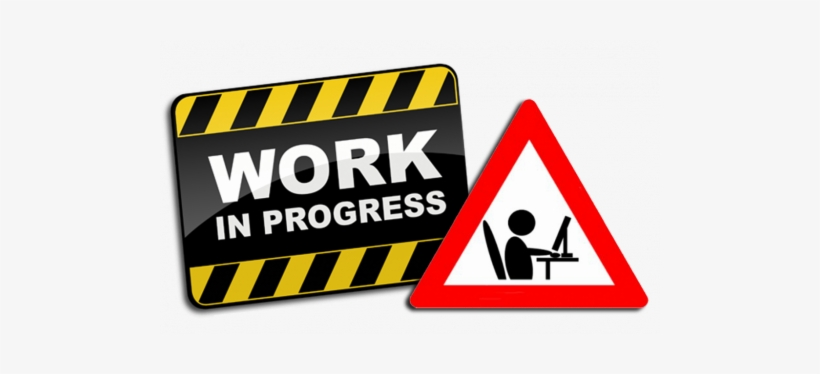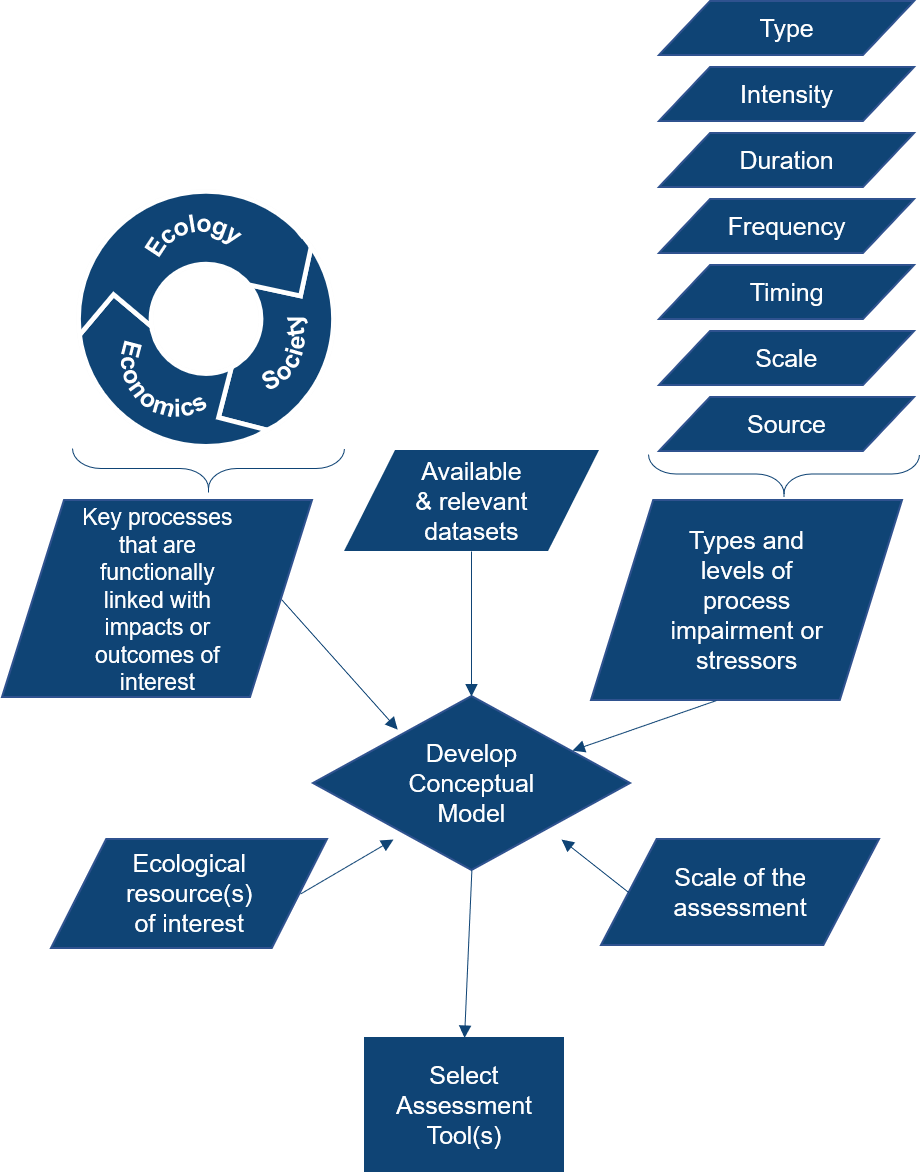Assessment Guidance: Assessment Preparation
By this point, you know what you want to do and generally how you want to achieve your goals. Next up is defining your approach. By taking the time to outline your overall approach, you will have a clear idea of how you will answer the questions at hand and what you need to do so.
IMPORTANT NOTE: STEPS 1 AND 2 SHOULD BE ITERATIVE!
Step 1: Develop a conceptual model
A conceptual model is a visual representation of the system you will assess. The conceptual model should include influences and relationships among processes and features.
Using your goals, objectives, and outcomes as a reference, answer three questions:
1) What do you care about?
What are your specific questions? What specific issues are you concerned with?
Remember - scale matters and should be accounted for explicitly. Assessment conducted at different scales will provide complementary insights about processes and impacts, and will provide information to assess patterns across landscapes
2) What processes and influences affect what you care about?
Key processes (among the multitude of potential processes) are those that are functionally linked with the impacts or outcomes of interest.
Be sure to address process impairments, both quantitatively and qualitatively and to identify the types and levels of process impairment. More complex and integrative metrics (e.g., CSCI scores) can help understand more complex patterns and prioritize across multiple stressors and impacts.
Explicitly consider:
- the food web and whether to include in the assessment
- links from water to land as well as land to water
3) What are the drivers or fundamental causes of alterations to these processes?
For example, impacts to water quality are often really about what has been done to a stream system and its dynamic interactions (e.g., removal of riparian buffer, paving of pervious surfaces, alteration of flow, etc).
Step 2: Develop data collection and management plan
Before going out and getting more data, it is important to first take an inventory of the data that is already available.
- What data are already available?
- What data will you need to be made? What measurements/observations will you need to collect?
- How will you collect new data?
- How will you manage your data?
- Pro tip! Use your conceptual model that you developed in Step 1 to help guide and identify your data needs.
See the Data Acquisition, Monitoring and Data Management Page for more guidance.
Step 3: Select the appropriate assessment tool(s)

Is something missing? Should other tools be available? Let us know!
Resources
- What is a conceptual model?
- Guide for Developing Conceptual Models for Ecological Risk Assessments
- Using conceptual models as a planning and evaluation tool in conservation (Margoluis et al., 2009)
- Australian Government’s Guide to Conceptual Models
- Conceptual Modeling in Adaptive Conceptual Modeling in Adaptive Watershed Management (UC Davis Workshop)


